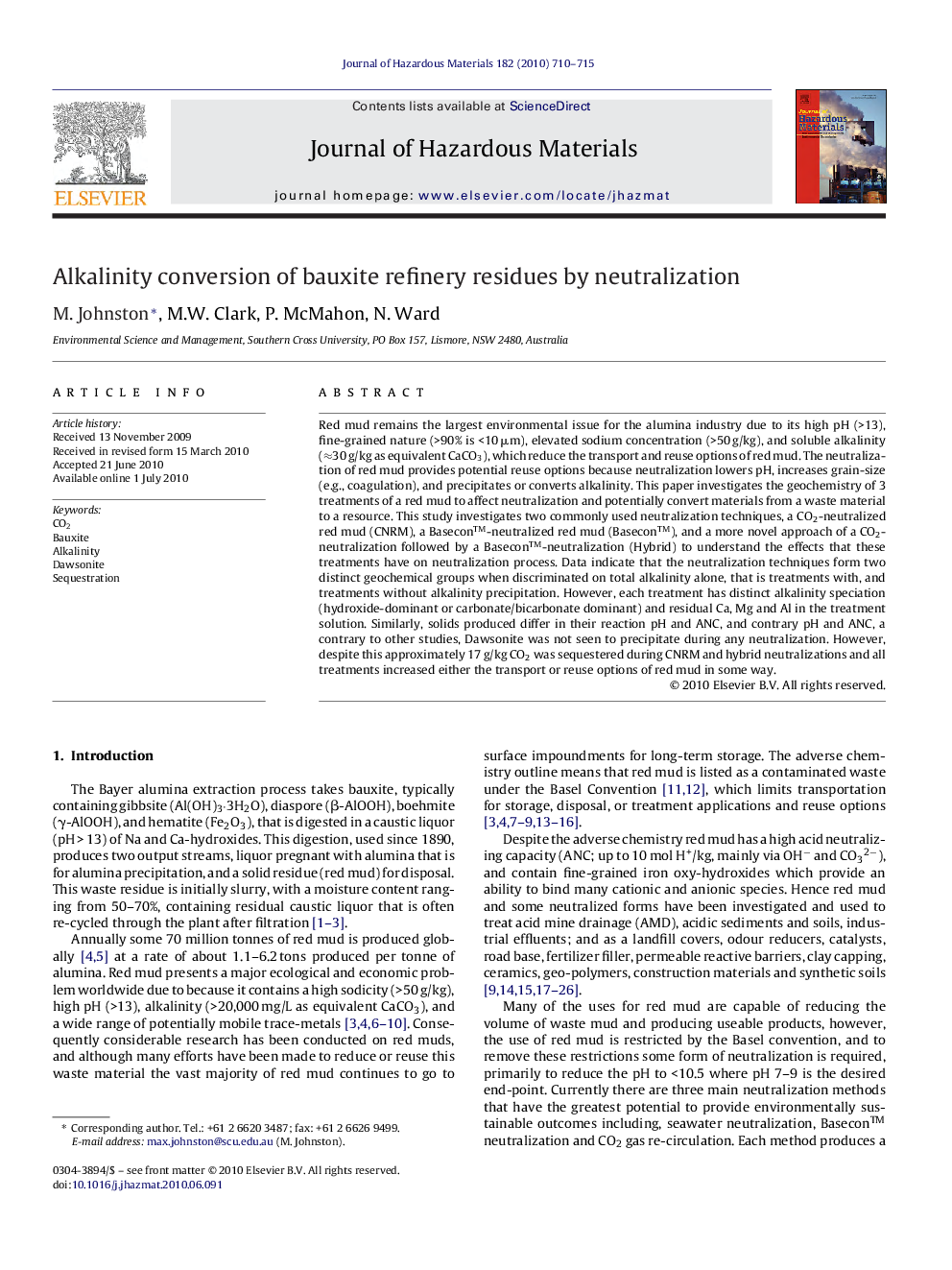| Article ID | Journal | Published Year | Pages | File Type |
|---|---|---|---|---|
| 579744 | Journal of Hazardous Materials | 2010 | 6 Pages |
Abstract
Red mud remains the largest environmental issue for the alumina industry due to its high pH (>13), fine-grained nature (>90% is <10 μm), elevated sodium concentration (>50 g/kg), and soluble alkalinity (â30 g/kg as equivalent CaCO3), which reduce the transport and reuse options of red mud. The neutralization of red mud provides potential reuse options because neutralization lowers pH, increases grain-size (e.g., coagulation), and precipitates or converts alkalinity. This paper investigates the geochemistry of 3 treatments of a red mud to affect neutralization and potentially convert materials from a waste material to a resource. This study investigates two commonly used neutralization techniques, a CO2-neutralized red mud (CNRM), a Baseconâ¢-neutralized red mud (Baseconâ¢), and a more novel approach of a CO2-neutralization followed by a Baseconâ¢-neutralization (Hybrid) to understand the effects that these treatments have on neutralization process. Data indicate that the neutralization techniques form two distinct geochemical groups when discriminated on total alkalinity alone, that is treatments with, and treatments without alkalinity precipitation. However, each treatment has distinct alkalinity speciation (hydroxide-dominant or carbonate/bicarbonate dominant) and residual Ca, Mg and Al in the treatment solution. Similarly, solids produced differ in their reaction pH and ANC, and contrary pH and ANC, a contrary to other studies, Dawsonite was not seen to precipitate during any neutralization. However, despite this approximately 17 g/kg CO2 was sequestered during CNRM and hybrid neutralizations and all treatments increased either the transport or reuse options of red mud in some way.
Related Topics
Physical Sciences and Engineering
Chemical Engineering
Chemical Health and Safety
Authors
M. Johnston, M.W. Clark, P. McMahon, N. Ward,
